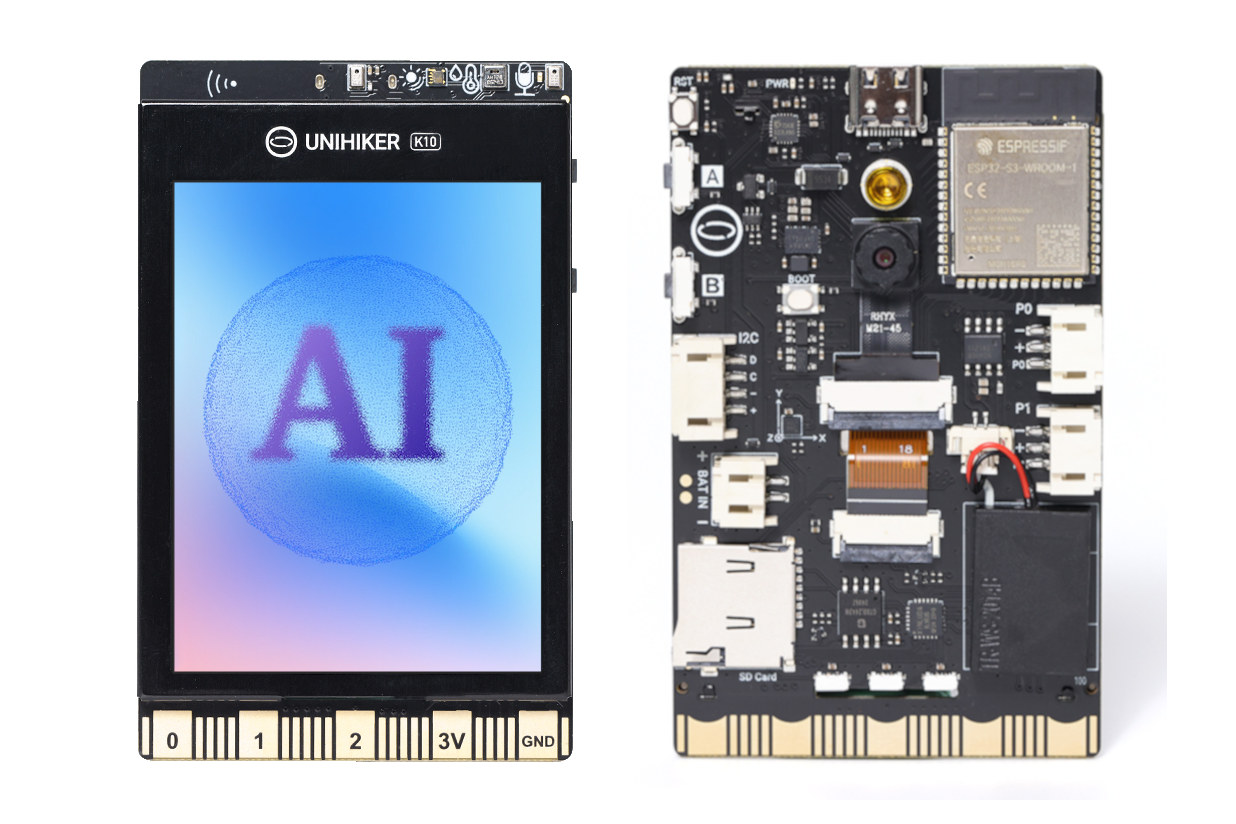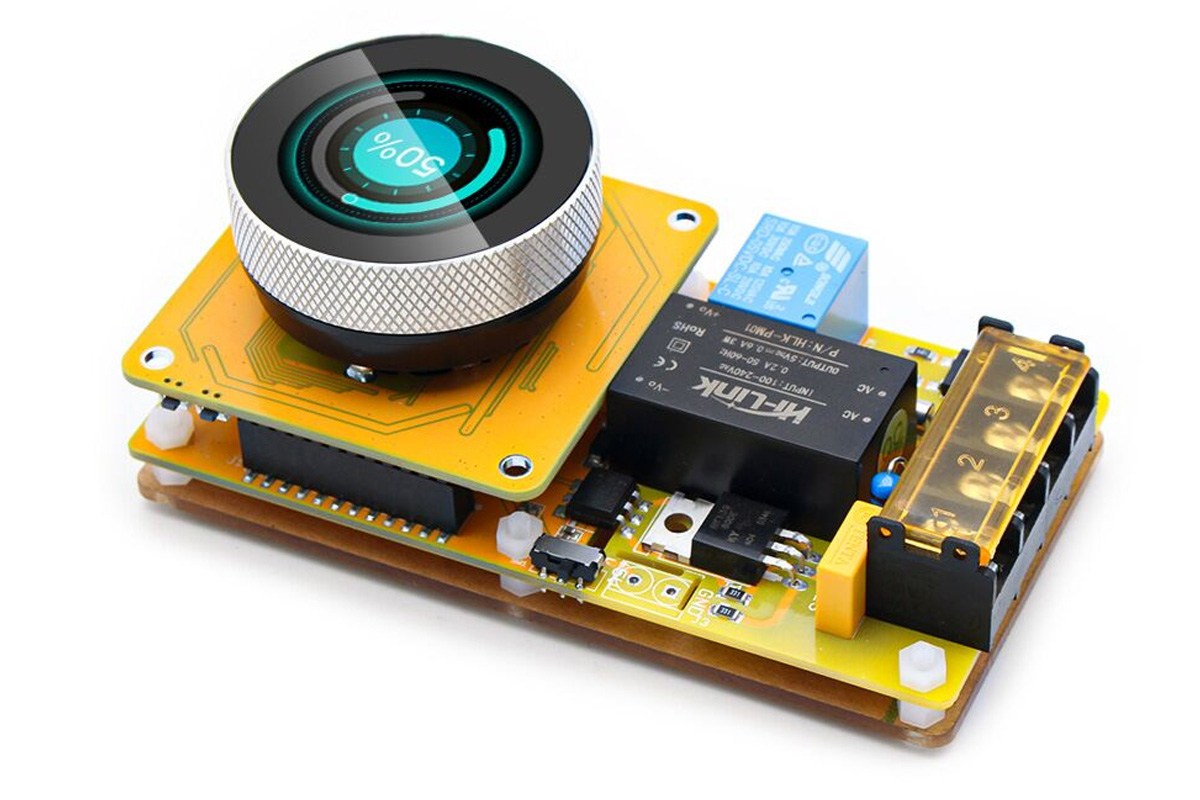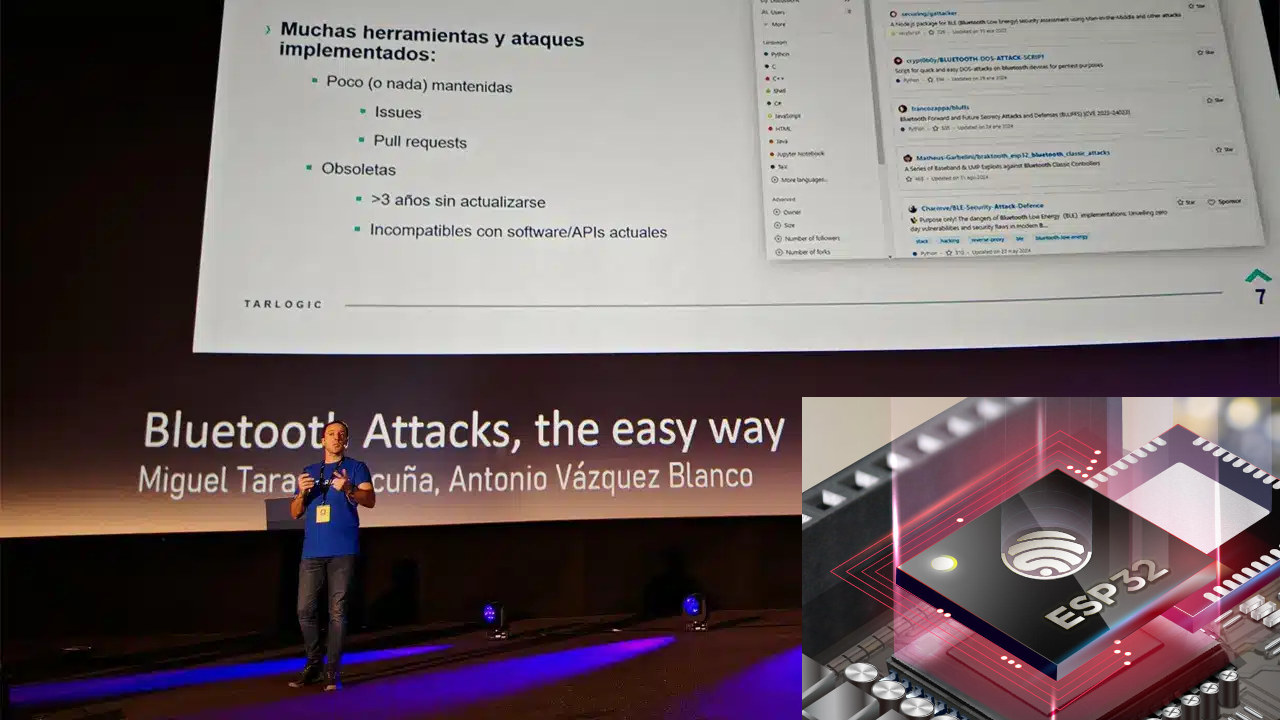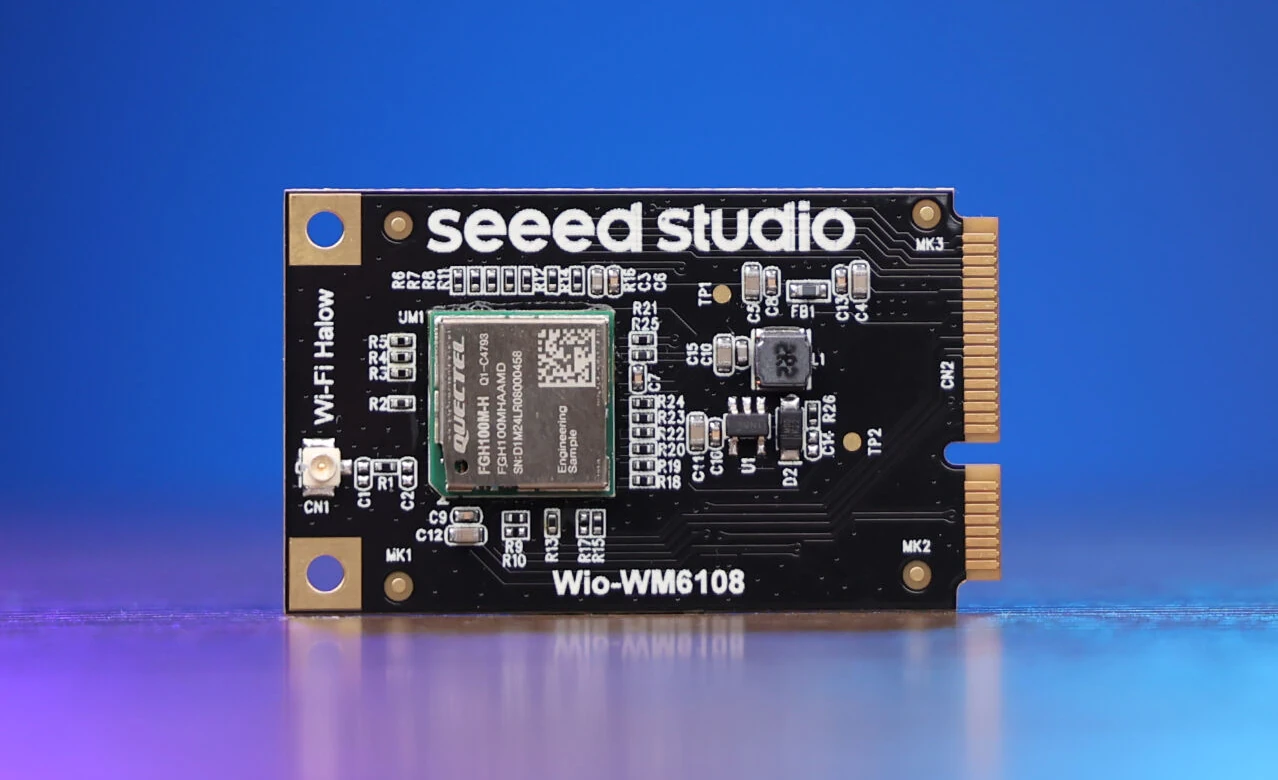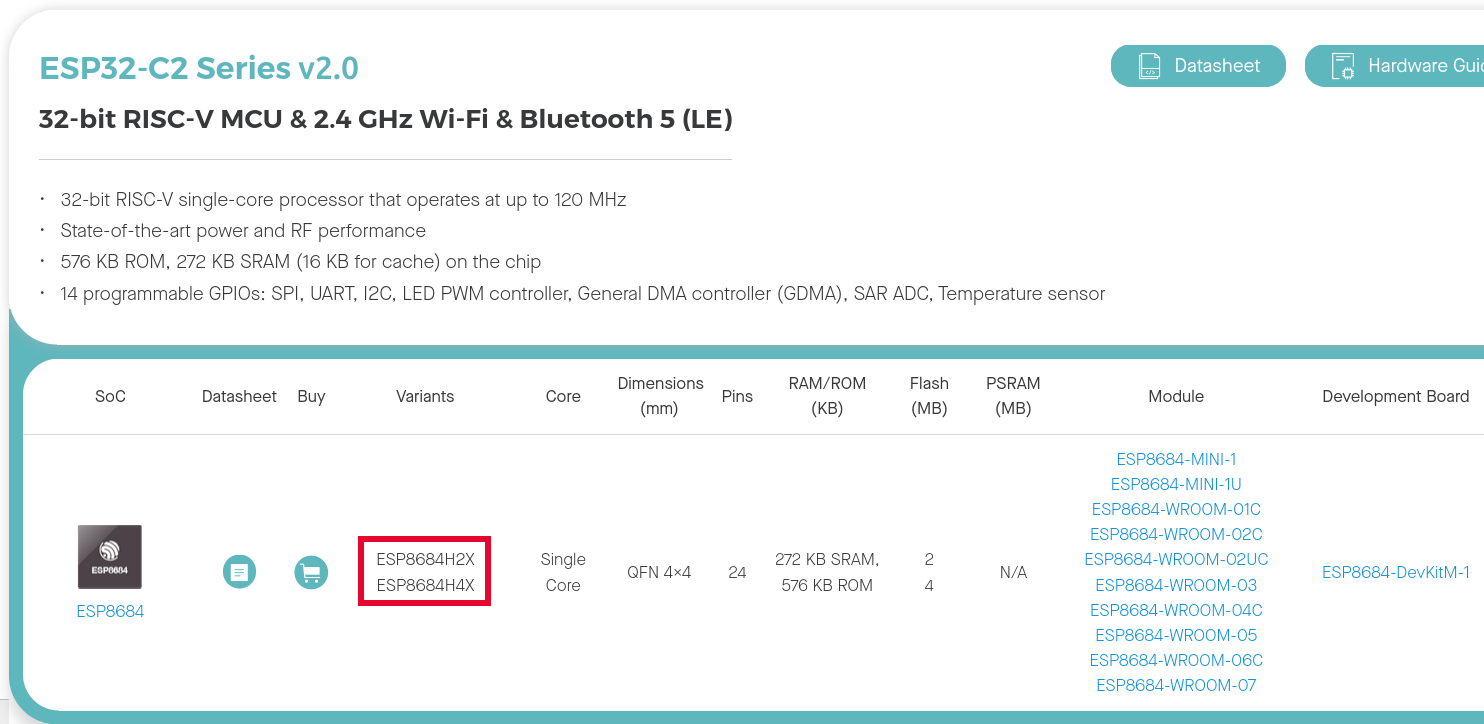UNIHIKER K10 is a low-cost STEM education platform for TinyML applications that leverages the ESP32-S3 wireless microcontroller with vector extensions for workloads such as image detection or voice recognition. The UNIHIKER K10 also features a built-in 2.8-inch color display, a camera, a speaker, a 2-microphone array, a few sensors, a microSD card, and a BBC Micro:bit-like edge connector for power signals and GPIOs. It’s a cost-optimized version of its Linux-based big brother – the UNIHIKER M10 – first unveiled in 2022. Arnon also reviewed the UNIHIKER in 2023, showing how to configure it, use the SIoT platform with MQTT message, and program it with Jupyter Notebook, Python, or Visual Studio Code. Let’s have a closer look at the new ESP32-S3 variant. UNIHIKER K10 specifications: Core module – ESP32-S3-WROOM-1 MCU – ESP32-S3N16R8 dual-core Tensilica LX7 up to 240 MHz with 512KB SRAM, 8MB PSRAM, 16MB flash Wireless – WiFi 4 and […]
ESP32-S3 based AC voltage controller/dimmer features a knob with integrated display
Makerfabs has recently introduced Matouch 1.28-inch ToolSet_AC Dimmer an open-source ESP32-based AC voltage controller for dimming lights or adjusting motor speeds using phase-cut dimming. Built around an ESP32-S3 wireless MCU, it features a 1.28” capacitive touch display (240×240), and a UI designed with LVGL/Squareline and the Arduino V2.3.4 IDE. The device relies on a BT139 Triac and a zero-cross detection circuit for precise AC voltage control, along with an onboard relay to enable a full AC on/off switch. With an integrated AC-DC module providing 5V @ 0.6A, it can operate within an input range of AC 100-240V, 50Hz-60Hz, with a maximum load of 10A at 240VAC. Designed for home and industrial applications, it can control lighting environments and electrical appliances while being open-source for customization and integration into various automation projects. Matouch 1.28-inch ToolSet_AC Dimmer specifications: SoC – Espressif Systems ESP32-S3 CPU – Xtensa® Dual-core 32-bit LX7 Microprocessor with up to 240MHz […]
NextPCB offers free ESP32-S3 PCBA prototypes for original designs (Sponsored)
NextPCB has started offering free PCBA prototypes for PCB designs based on the ESP32-S3 wireless microcontroller following a similar offer for free Raspberry Pi RP2040/RP2350 PCBAs launched in January 2025. The Chinese PCB/PCBA manufacturer’s new “accelerator campaign” targets developers, makers, and researchers who developed their own PCB based on the ESP32-S3 microcontroller. They can get two free PCBA prototypes for the original design. Slots are however limited, and NextPCB will select 20 projects for sponsorship. If selected, you’ll get the following: Free Prototyping – Get 2 free PCBA units, including PCB fabrication, components, assembly, and worldwide shipping (valued up to $500 US). Technical Support – Get expert assistance with manufacturing engineering, design guidance, certification, and production. Personalized Assistance – Receive dedicated one-on-one support throughout your manufacturing journey. The company will prioritize business projects, but hobbyist designs that contribute to the open-source community and showcase interesting applications using ESP32-S3 will also […]
Hidden proprietary Bluetooth HCI commands in ESP32 microcontroller could pose a security risk
Security is hard. Just as Espressif Systems announced PSA Level 2 for the ESP32-C6 microcontroller, Spain-based cybersecurity company Tarlogic published their findings about a hidden Bluetooth functionality that can be used as a backdoor in the previous generation ESP32, and gave a presentation in Spanish at Rootedcon 2025. Specifically, they found hidden proprietary Bluetooth HCI (Host Controller Interface) commands used to read & write controller memory, and typically used for debugging. However, they could also facilitate supply chain attacks, the concealment of backdoors in the chipset, or the execution of more sophisticated attacks. Tarlogic initially called it a “backdoor”, but some disputed the claim (more on that later), and the company eventually issued an update downgrading it to a “hidden” feature: We would like to clarify that it is more appropriate to refer to the presence of proprietary HCI commands—which allow operations such as reading and modifying memory in the […]
ESP32-C6 is the first RISC-V microcontroller to achieve PSA Level 2 security compliance
Arm introduced the Platform Security Architecture (PSA) back in 2017 to make Internet of Things (IoT) chips more secure. Since then we’ve seen many PSA certified products such as Silicon Labs’ EFR32FG23 (FG23) and EFR32ZG23 (ZG23) Cortex-M33 microcontrollers with PSA Level 3 certification. But as announced in 2017, PSA is architecture-agnostic, and the security architecture has gone beyond just certifying Arm microcontrollers, as shown by Espressif Systems who just announced that the ESP32-C6 RISC-V wireless microcontroller was now PSA Level 2 certified. The ESP32-C3 RISC-V MCU also achieved PSA certification earlier, but at the lower Level 1. The PSA-L2 certification was mostly made possible thanks to the ESP-TEE (Trusted Execution Environment) firmware that provides hardware-enforced isolation to enhance security for operations such as cryptographic key management, secure boot verification, and firmware updates. Espressif also reminded us of ESP32-C6’s hardware security features in the announcement: Physical Memory Protection (PMP) and Access […]
Seeed Studio launches Wi-Fi HaLow mini PCIe module for Raspberry Pi, add-on board for XIAO boards
Seeed Studio has launched two 900 MHz WiFi HaLow modules for long-range, low-power communication based on Quectel FGH100M-H: the Wio-WM6180 Wi-Fi HaLow mini-PCIe module designed to be installed in hardware such as OpenWrt routers or even Raspberry Pi SBCs, and the Wi-Fi HaLow module for Seeed Studio XIAO designed to take XIAO boards with Espressif, Raspberry Pi, or Nordic Semi microcontrollers. These solutions can be useful for Smart Home devices, industrial automation, Smart City infrastructure, Smart Agriculture, and environmental monitoring systems. The most typical use cases are WiFi HaLow cameras with up to one kilometer range. Wio-WM6180 Wi-Fi HaLow mini-PCIe Module Specifications: Quectel FGH100M-H Wi-Fi HaLow module compliant with IEEE 802.11ah standard. Chipset – Morse Micro MM6108 Wi-Fi Frequency Band – 902–928 MHz Operating mode – Access Point (AP) or Station (STA) Modulation – OFDM, BPSK, QPSK, 16QAM, 64QAM Data Rate – Up to 32.5Mbps link rate Range – Up […]
LILYGO T-Connect Pro industrial IoT controller offers Ethernet, WiFi, Bluetooth, LoRa, RS232, RS485, and CAN Bus
LILYGO T-Connect Pro is a DIN rail-mountable, ESP32-S3-based industrial IoT controller with Ethernet, WiFi 4, Bluetooth 5.0 LE, and LoRa connectivity, as well as CAN Bus, RS232, and RS485 interfaces. The controller also features a 2.33-inch touchscreen display, a 10A relay, a 12V to 24V DC screw terminal for power, 5V USB-C port for programming, a Qwiic connector for expansion, and BOOT and Reset buttons. LILYGO T-Connect Pro specifications: SoC – Espressif ESP32-S3R8 CPU – Dual-core Tensilica LX7 microcontroller up to 240 MHz with vector instructions for AI acceleration Memory – 8MB PSRAM Wireless – WiFi 4 and Bluetooth 5.0 LE + Mesh connectivity Storage – 16MB SPI flash Display – 2.33-inch RGB display with 480×222 resolution via ST7796 SPI display controller with touchscreen using CST226SE chip Networking 10/100Mbps Ethernet RJ45 port via W5500 4-wire SPI controller WiFi 4 and Bluetooth 5.0 LE via ESP32-S3 LoRa via HPD16A Semtech SX1262 […]
ESP32-C2 v2.0 wireless SoC adds 20 KB of additional SRAM, 100 KB of extra flash
Espressif ESP32-C2 (ESP8684) has been updated to v2.0 with 20 KB of additional SRAM, 100 KB of extra flash, with some improvements in terms of erase and program performance. The ESP32-C2 was first unveiled in April 2024 with limited details, and launched in October of the same year as the ESP8684 SiP combining ESP32-C2 die with 4MB flash, as well as a few ESP8684 modules and the ESP8684-DevKitM-1 development board. The ESP32-C2 is meant to be a cost-down version of the ESP32-C3 with less RAM and peripherals, and the ESP32-C2 v2.0 slightly improved on that with parts adding X to the name: ESP8684H2X (2MB flash) and ESP8684H4X (4MB flash). Modules and devkit names are also impacted, albeit not shown yet in the screenshot below. The part names had to be updated because chip revision v2.0 and previous chip revisions are not software-compatible, so Espressif had to update the ordering codes […]


